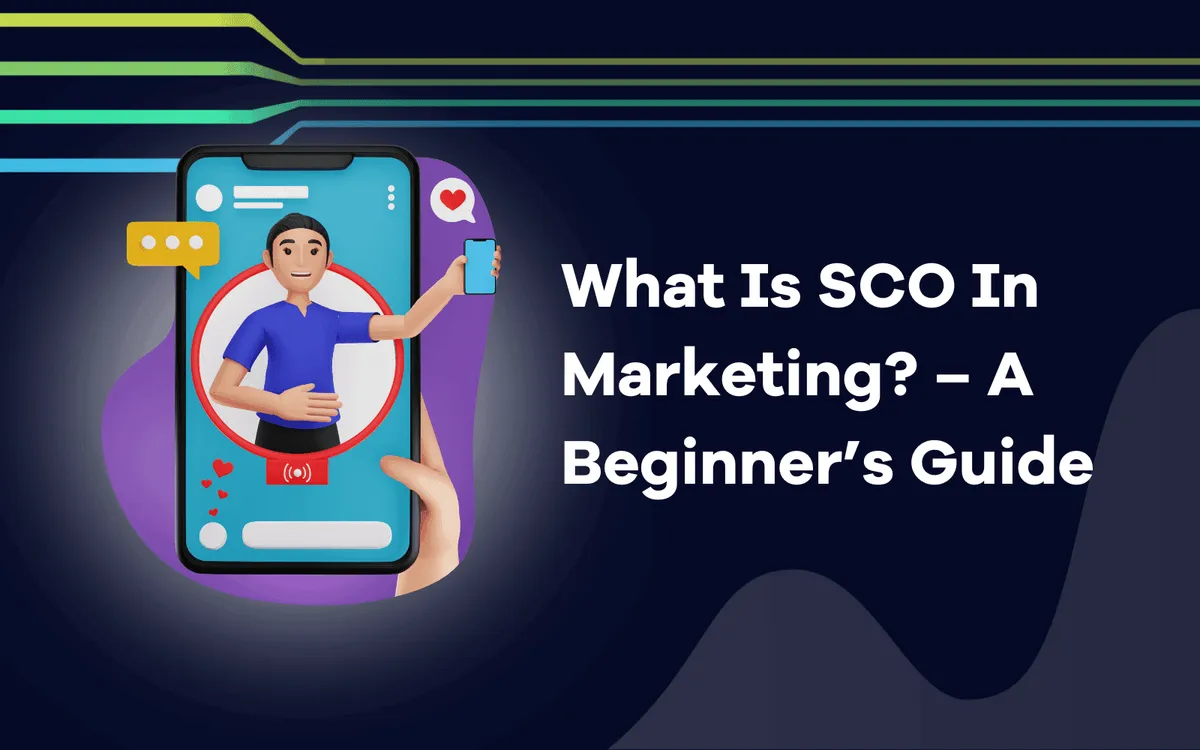
What Is SCO In Marketing? – A Beginner’s Guide

Freya Laskowski
December 6, 2023
SCO marketing maximizes your visibility to increase website traffic across multiple channels. Read this to understand how it works and learn five SCO strategies.
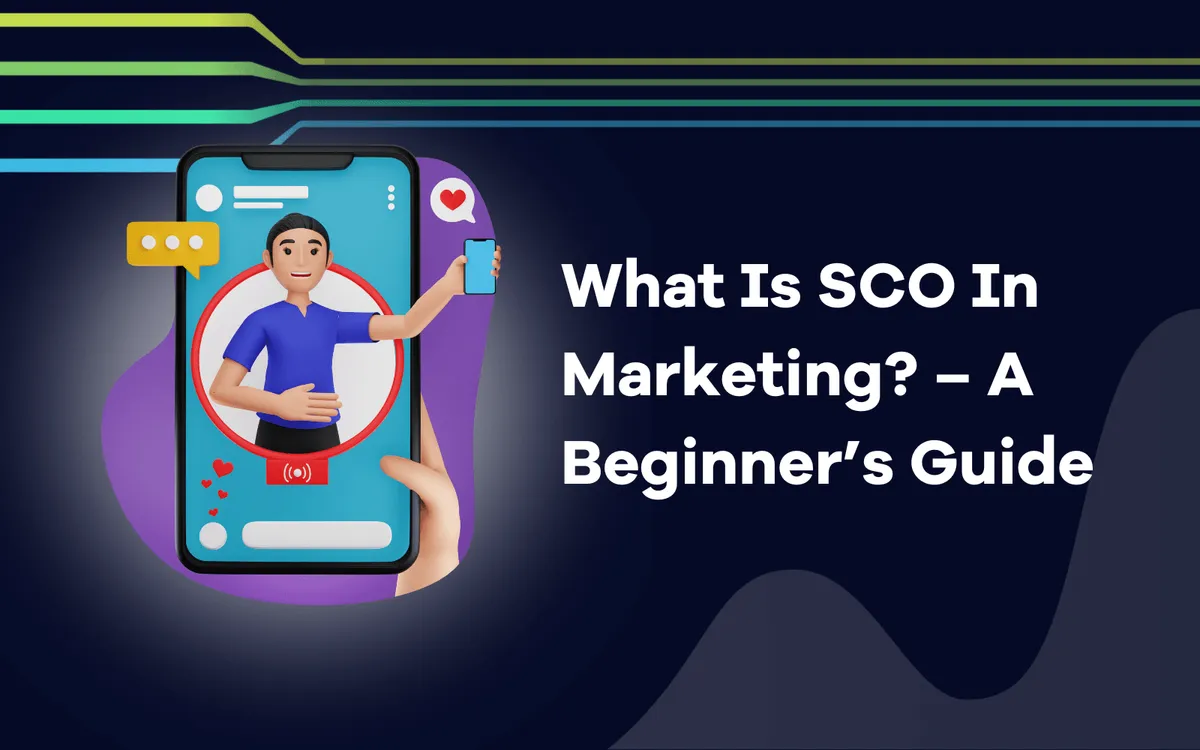
When you first heard of SCO marketing, you might’ve confused it with SEO.
Or, you were told it stood for Social Channel Optimization—then Search Channel Optimization—and then Sales Cycle Optimization.
Well, the confusion stops here.
In this blog post, we’ll get to the bottom of what SCO marketing is, the difference between SCO and SEO, and five SCO marketing strategies to increase your website traffic.
What is SCO Marketing?
SCO can stand for three different things: Social Chanel Optimization, Search Channel Optimization, and Sales Cycle Optimization.
But in the context of digital marketing, SCO is most commonly understood as Social Channel Optimization.
SCO (Social Channel Optimization) refers to creating and optimizing content to get more visibility and traffic from search engines and social media algorithms.
In the context of social media, it also focuses on increasing engagement and follower count, plus driving traffic from the social channel to your website.
When marketers use SCO practices for websites, it’s usually referred to as Search Channel Optimization. The goal is the same: to increase traffic and engagement through content that the search engine’s algorithm ranks well.
It includes various factors, such as on-page optimization, off-page optimization, search engine optimization (SEO), link building, and more.
An important factor of SCO marketing is that it is multichannel. Unlike SEO, SCO doesn’t solely focus on improving a piece of content’s position on the SERP (Search Engine Results Page). It enhances your other marketing efforts—like SEO—by maximizing visibility on other channels, such as social media platforms.
What is the Difference Between SEO and SCO in Marketing?
SCO and SEO are both similar marketing terms that get thrown around often. They also have extremely similar goals: to increase your content’s visibility and drive website traffic.
However, the terms aren’t interchangeable.
Essentially, SCO is an “umbrella” marketing term that SEO falls under. SEO is specific to search engine algorithms, whereas SCO encompasses many more channels.
For example, SEO entails increasing organic search traffic by getting content to rank high on the SERP without paying for ads. However, PPC (pay-per-click) advertising is part of SCO marketing.
SCO also involves social media optimization, video marketing, email marketing, improving app store rankings, increasing podcast subscriptions and listens, and more.
In summary, SCO focuses on increasing website traffic by maximizing visibility on all of your online channels. SEO, on the other hand, only does so through optimizing website content for organic search.
How to Create an SCO Marketing Strategy
Now that you understand what SCO is—and the difference between SCO and SEO—let’s look at five strategies you can use to improve your SCO marketing efforts.
#1. Target Low-Hanging Fruit Keywords and Relevant Hashtags
Low-hanging fruit keywords are keywords that have high monthly search volume and low competition.
The goal is to maximize the search traffic you can get from the keyword, but not be drowned out by bigger websites with much higher Domain Authority (DA) that dominate the SERP.
A similar concept can be applied to hashtags on social media.
You’ll want to choose hashtags that have a substantial amount of posts, many people follow, and are relevant to your posts. But you want to avoid getting drowned out by large accounts with 10K+ followers or using hashtags that have content added to them every second.
Identifying low-hanging fruit keywords and hashtags boils down to research.
You can use keyword research tools (like SEMRush and Ahrefs) to search for keywords and search queries until you’ve found a few that have the perfect volume-to-competition ratio.
As for hashtags, experiment with longer versions of short, broad terms that fit your content’s niche.
For example, let’s say a personal injury law firm like Attorney Brian White Law Firm or even a law firm SEO service like LawRank wanted to find the right keywords and hashtags to use on social media and blog posts to maximize their visibility.
Using the hashtag #lawyer on Instagram would get them lost in the crowd—there are over 5.58 million posts.
But using a longer, more specific keyword like #personalinjurylawyers would give them a significantly better chance of being seen by their ideal audience since that hashtag only has a bit over 74,000 posts.
For keywords, SEMRush shows that “personal injury lawyer” has an 81% keyword difficulty score.
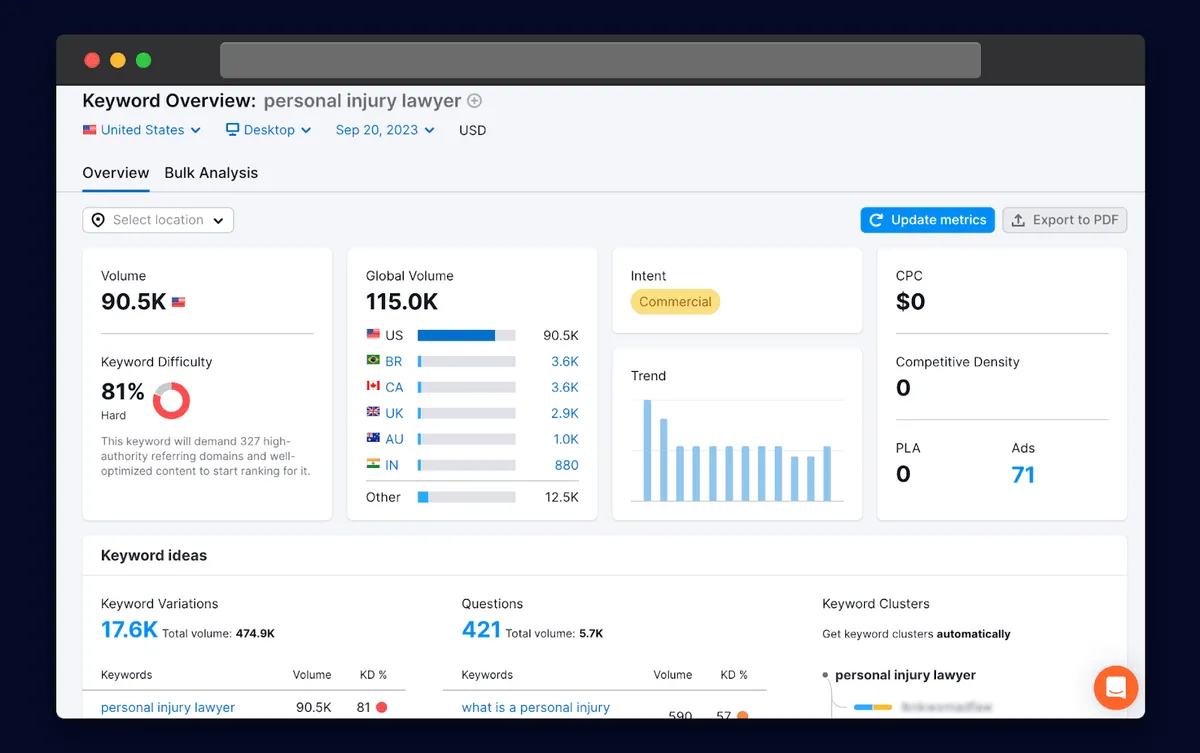
But “personal injury lawyer Austin TX” only has 43%.
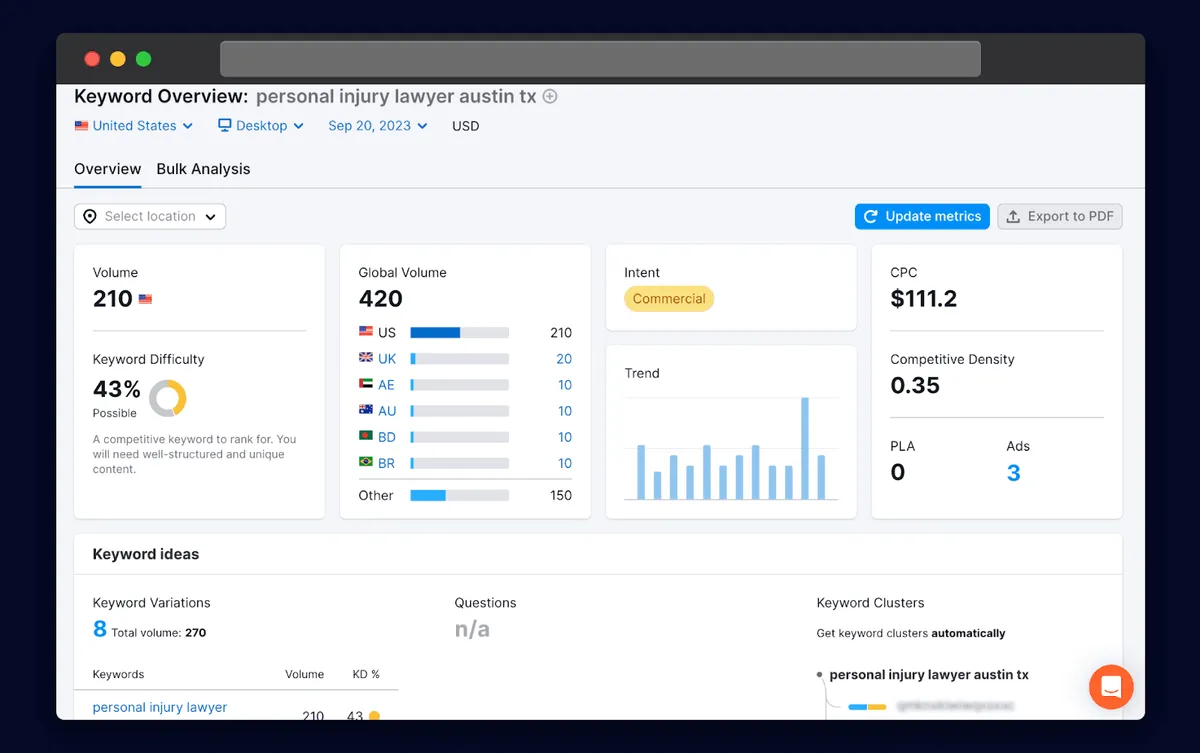
Alt text: SEMRush results for the keyword “personal injury lawyer Austin TX”
Keyword and hashtag research can be time-consuming, but it’s a vital step you can’t miss. Because of this, I recommend dedicating it to someone specific on your marketing team or hiring a personal assistant to handle the task.
#2. Optimize Your Content and Publish it on Multiple Channels
After you’ve compiled a list of low-hanging fruit keywords and hashtags, it’s time to start creating content around those topics.
Target the keywords without keyword stuffing. (A general rule of thumb is to have a keyword density of 10%). And add your hashtags to social media posts at the end or in a comment.
However, optimizing your content entails much more than just keyword targeting.
Research each platform you’re going to focus on—Google, Instagram, Twitter, YouTube, Spotify, etc. Then, apply strategies specific to that platform to ensure your content achieves the highest ranking position possible.
Once you’ve published the fully optimized piece, start repurposing it to distribute across your other channels.
For example, if you wrote an SEO-optimized blog post about how to invest in stocks, share it on your social media profiles.
Then, have your graphic designer or social media marketer turn the blog post into multiple social media posts.
For example, each section could be an Instagram carousel that highlights the most important takeaways.
Or you could turn the post into a YouTube video.
You can also create 10-15 extracts from the article as Tweets. Then schedule them to be published over the next few days.
This type of repurposing fills your pipeline with endless amounts of content with minimal effort and time expenditure. Think of it as wringing everything you can out of the original piece until you run out of ways to recycle it.
#3. Post on the Right Days of the Week and Times of Day
Maximizing visibility means posting when your audience is most likely to see your content.
Luckily, it’s easy to identify the times your followers are most active (read: the best time to post) using your social media account analytics.
For example, Instagram lets you do this by going to Insights → Audience. This shows you what times of day (and on which days) your audience is most likely to interact with your posts.
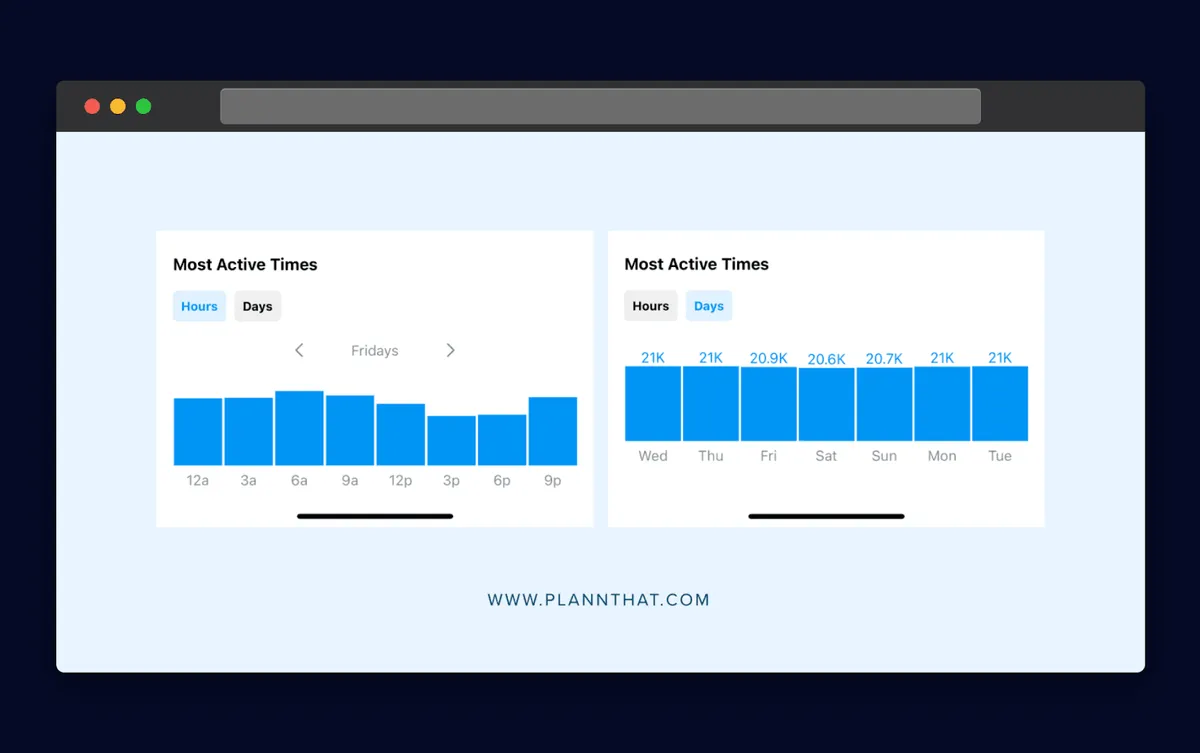
Take advantage of these demographics and schedule your content around them.
#4. Collect High-Quality, Trustworthy Backlinks
Link building is one of the most overlooked SCO and SEO strategies. It involves generating links to your website and its content on other websites.
The more backlinks you have, the higher your Domain Authority (DA) becomes.
However, Google has made it clear that the quality of backlinks matters. Essentially, the impact of a random, irrelevant, super-low DA website linking to your content will be extremely low.
Instead, go for high-DA sites that are relevant to your niche.
For example, the company Going—which helps its users find cheap flights—would benefit from receiving a backlink from a website like Tripadvisor, which has a DA score of 93 and is also in the travel industry.
Shop Solar—an online store that sells solar kits, panels, generators, and more—would want to receive a backlink from a site like Solar Power World Online, which has a DA of 60.
The best, organic way to generate backlinks is by creating shareable content. In other words, content that other content creators naturally want to use and link to.
Some examples of the best types of shareable content are:
Case studies
Research and studies
Statistic round-ups
Infographics
Charts and graphs
Interviews with industry professionals
It’s also essential to have a well-designed website that other brands trust. If you haven’t already, consider hiring a freelance web developer to ensure your site is fast to load, easy to navigate, and has an attractive design.
#5. Study Your Analytics, Track the Right Metrics, and Tweak Your SCO Strategy
Tracking the right metrics and analytics lets you measure and make an assessment of your SCO marketing strategy’s progress. Then, you can make adjustments as necessary.
Since SCO involves multiple channels, there are tons of metrics you can monitor. So which ones you choose to watch will depend on the channels you’re focusing on.
However, some of the most common (and worthwhile) metrics include:
Monthly search traffic/page views
Keyword ranking position
Social media engagement rate
ROI on paid advertising campaigns
Click-through-rate (CTR) on emails, social media posts, and ads
Social media website visits
You can easily track these metrics through your social media accounts and SEO metric trackers like AccuRanker.
For example, AccuRanker lets you track your web pages’ keyword ranking positions, website traffic, monthly analytics like page views, number of organic ranking positions, and more.
This is another time-consuming task you can dedicate to your marketing team or outsource to a freelancer.
Conclusion
In short, SCO marketing entails implementing strategies to increase your visibility on every online channel you have a presence on.
With these five strategies, you’ll be on your way to crafting a foolproof SCO strategy that leads to more traffic and in turn, more revenue.
Related blog posts

AI Overviews Are Taking Over SERPs
From traffic drops to decreasing CTRs, AI Overviews are shaking up SEO. Learn what is happening and how AccuRanker helps you track AIO.
25 June 2025
How AccuRanker’s AI Models Fix Inaccurate SEO Data
Struggling with unreliable SEO data? Discover how AccuRanker’s CTR, Search Intent, Search Volume, and Share of Voice deliver accurate insights.
1 June 2025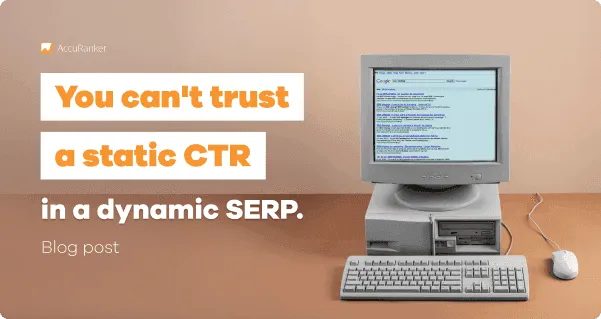
Why Your CTR Model Is Betraying You
The static CTR model relies on outdated averages. Learn more about how AccuRanker's dynamic CTR model helps you prioritize your SEO efforts.
13 May 2025



